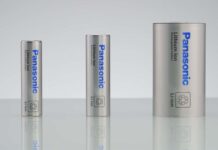[ad_1]
Individually, each battery cell is small and seemingly insignificant. However, when hundreds of these cells are connected in series and parallel, they comprise the principal component of an electric car’s powertrain. That’s why finding a cell chemistry that maximizes energy density and longevity is essential for powering the EVs of tomorrow. One possible next-gen chemistry is lithium metal due to its highly energy-dense characteristics. Stanford’s Precourt Institute for Energy has recently discovered that lithium metal batteries also exhibit a fascinating characteristic: lost capacity due to degradation can be recovered.
Get Fully Charged
Imagine being able to revive a dying battery.
With lithium metal chemistries, there may be a way to bring an old battery back to life. The key, it seems, is to leave it fully discharged for a period of time.
What Are Lithium Metal Batteries?

Lithium metal batteries are similar to the lithium-ion batteries powering the smartphones and EVs of today, though there is a notable distinction. In lithium-ion batteries, the cathode is made of porous lithium-oxide, and the anode is composed of graphite. Lithium metal batteries keep the lithium-oxide cathode but replace the graphite anode with one made of electroplated lithium. Using the electroplated lithium anode significantly increases the charge-storage capacity and has the potential to double an EV’s range— “600 miles per charge versus 300 miles, for example,” PhD student Philaphon Sayavong wrote.
But there’s a catch: lithium metal batteries degrade in capacity much more rapidly than lithium-ion batteries. As the battery undergoes charge cycles, bits of the electroplated lithium metal can become detached from the anode. Simultaneously, a solid electrolyte interface (SEI) matrix forms as the cell discharges. The SEI matrix forms where the lithium metal anode and electrolyte meet. The electrolyte, which can be liquid or solid-state in lithium metal batteries, houses the separator, which prevents the cathode and anode from coming into contact with each other but allows electrons to flow through.
When the lithium metal becomes detached, it can become trapped by the newly-formed SEI matrix, becoming a dendrite. When trapped, it no longer contributes to battery charge cycles. In this case, the dendritic lithium is considered “dead,” and the cell’s charge capacity will diminish; in other words, the battery degrades. Battery degradation has been typically viewed as irreversible.
Potentially Reversing Battery Degradation
Stanford’s recent research demonstrates that one can restore diminished capacity in lithium metal batteries with the proper charging protocols. When InsideEVs spoke with Stanford Precourt Institute for Energy director Dr. Yi Cui, he told us that one of his students proposed leaving the battery in a completely discharged state for several hours. The rationale was that if a lithium metal battery would degrade when sitting fully charged for an extensive period, the opposite could happen if the battery was sitting wholly discharged. “Then what we discovered is that instead of failure, we actually recovered the capacity, so that was a huge surprise to us,” Cui told InsideEVs.
Cui’s research reveals that degraded capacity in a lithium metal battery cell can be restored. When the discharged cell was left sitting for a period of several hours, the SEI matrix would begin to dissolve into the electrolyte, freeing the trapped lithium. Then, as the battery is charged, the lithium can become reattached and once again contribute to the battery charge capacity. According to the research in Nature, the result was 98.2 percent coloumbic efficiency in “revived” cells versus 96.9 in control cells. This means the “revived” cells held more energy than the control group.
Real-World Implications

Cui says lithium metal batteries going mainstream is still a while off, but he wants to further his lab’s research on larger-scale projects—like testing with full-fledged battery packs in EVs. This would provide the real-world data needed to bring these batteries into the consumer vehicle space. If the project sees similar results on the road as in the lab, future owners of li-metal EVs would need to be mindful of the differing properties. For instance, owners may need to bring their batteries down to zero weekly and leave them sitting to potentially enhance longevity.
It’s apparent that lithium metal batteries in EVs might require drivers to have different driving habits, but these changes will likely be for the better. Over time, altered charging patterns with these batteries could mean much longer lives powering cars. “We don’t know yet in the real situation how much this will boost up the {long-term battery life},” Cui told InsideEVs. “But we think it is going to be significant.”
[ad_2]
Source link















